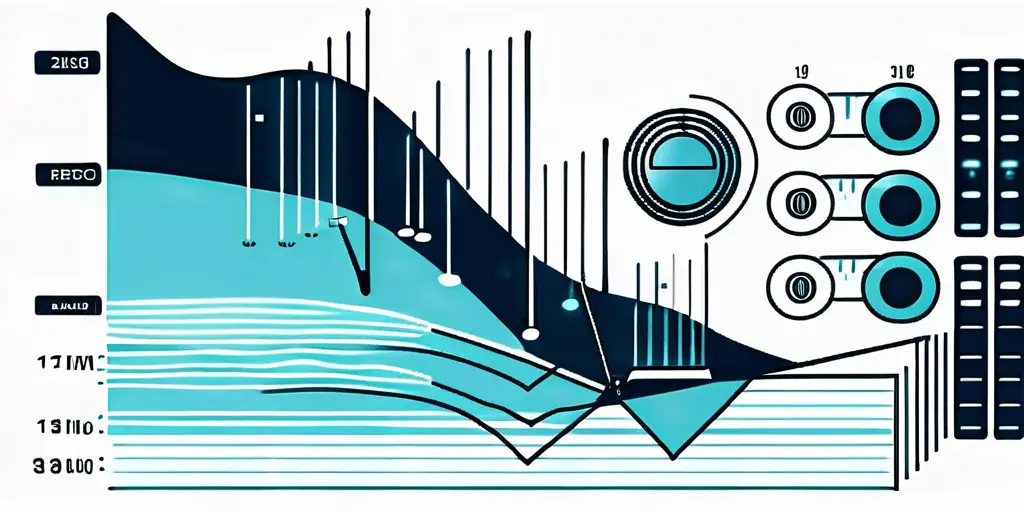Software Defined Radio (SDR) is a revolutionary technology that has transformed the field of wireless communication. With its ability to redefine the traditional hardware-centric approach to radio communication, SDR opens up new possibilities and applications in various industries. In this article, we will delve into the world of SDR, exploring its basic principles, evolution, working mechanism, benefits and applications, as well as its future prospects.
Understanding the Basics of Software Defined Radio
Definition of Software Defined Radio
At its core, Software Defined Radio refers to a wireless communication system in which the functionality of traditional hardware radio devices is implemented by using software algorithms running on a computer or embedded system. Instead of relying solely on dedicated, fixed hardware components, SDR leverages the flexibility and programmability of software to perform signal processing tasks.
Software Defined Radio has revolutionized the field of wireless communication by enabling a high degree of flexibility and reconfigurability in radio systems. With SDR, users can easily modify and upgrade the radio’s capabilities through software updates, without the need to replace any hardware components. This adaptability makes SDR particularly valuable in applications where rapid changes or upgrades are required, such as military communications and emergency response systems.
Key Components of a Software Defined Radio
A typical SDR system consists of three main components: the radio frequency (RF) front-end, the digital-to-analog converter (DAC) and analog-to-digital converter (ADC), and the software-defined portion. The RF front-end handles the reception and transmission of RF signals, while the DAC and ADC convert the analog signals to digital and vice versa. The software-defined portion is responsible for implementing signal processing and modulation/demodulation algorithms.
The RF front-end in an SDR system plays a crucial role in filtering and amplifying incoming RF signals before they are digitized by the ADC. This component is essential for ensuring that the radio can effectively receive and transmit signals within the desired frequency range with minimal interference. Additionally, advancements in RF front-end technology have led to improved signal sensitivity and selectivity in SDR systems, enhancing their overall performance and reliability.
The Evolution of Software Defined Radio Technology
The Origins of Software Defined Radio
The origins of Software Defined Radio (SDR) can be traced back to the military domain, where the need for more versatile and agile communication systems led to the development of software-based radio solutions. The U.S. Defense Advanced Research Projects Agency (DARPA) played a crucial role in advancing SDR technology, investing in research and development efforts to enhance the capabilities and functionalities of software-defined radios.

SDR technology revolutionized the field of radio communications by shifting the processing of radio signals from hardware to software. This paradigm shift allowed for greater flexibility, adaptability, and upgradability in radio systems, as well as the ability to support multiple communication standards on a single platform.
Modern Developments in Software Defined Radio
In recent years, SDR has gained significant traction beyond military applications, finding its way into commercial sectors such as telecommunications, broadcasting, public safety, and even amateur radio. The advancement of digital signal processing, coupled with the ever-increasing computing power and the availability of cost-effective hardware components, has fueled the proliferation of SDR technology.
One prominent example of SDR adoption is the OpenBTS project, pioneered by Range Networks (now part of InterDigital). OpenBTS leverages SDR to create open-source GSM (Global System for Mobile Communications) networks, providing cost-effective mobile communication solutions in areas lacking traditional infrastructure.
Another exciting development in the realm of SDR is the emergence of cognitive radio technology, which enables SDR devices to intelligently adapt their transmission parameters based on the surrounding radio frequency environment. This capability allows for more efficient spectrum utilization, improved interference mitigation, and enhanced overall network performance.
How Does a Software Defined Radio Work?
The Role of Software in SDR
In traditional radio systems, various hardware components are responsible for the signal processing tasks. SDR, on the other hand, transfers these functions to software running on a computer or embedded system. The software utilizes digital signal processing techniques to receive and process incoming signals, and to generate and transmit outgoing signals.

One of the key advantages of using software in SDR is the flexibility it offers. By implementing signal processing tasks in software, SDR systems can be easily reconfigured and updated without the need for hardware modifications. This flexibility allows for a wide range of applications, from amateur radio to military communications, all using the same underlying hardware.
Understanding the Signal Processing in SDR
Signal processing in SDR involves a series of complex but well-defined steps. It starts with the reception of RF signals, which are then converted into digital samples by the ADC. The digital samples are then processed using software algorithms to extract the desired information or perform specific tasks such as modulation and demodulation. Finally, the processed signals are converted back to analog format using the DAC and transmitted through the RF front-end.
Within the realm of signal processing, SDR opens up a world of possibilities for experimentation and innovation. Researchers and hobbyists can explore advanced signal processing techniques, such as adaptive filtering and spectrum sensing, to improve the performance of SDR systems. This hands-on approach to signal processing not only enhances the capabilities of SDR, but also contributes to the broader field of wireless communications.
Benefits of Using Software Defined Radio
Flexibility and Versatility of SDR
An inherent advantage of Software Defined Radio (SDR) lies in its flexibility and versatility. The software-based nature of SDR enables rapid reconfiguration and adaptation to new communication standards or protocols. This makes SDR systems highly flexible and future-proof, as they can be easily upgraded and modified to support evolving technologies without the need for hardware replacements.

Moreover, the flexibility of SDR extends to its ability to be used across a wide range of applications, from military and defense communications to amateur radio and public safety networks. This versatility allows for the same SDR hardware to be repurposed for different use cases, maximizing its utility and cost-effectiveness.
Cost Efficiency and Scalability of SDR
SDR offers substantial cost savings compared to traditional hardware-based radio systems. With SDR, a single hardware platform can support multiple wireless standards, eliminating the need for separate, dedicated hardware for each protocol. This consolidation not only reduces upfront costs but also simplifies maintenance and upgrades, leading to overall cost efficiency.
Furthermore, the scalability of SDR systems is a key benefit for organizations looking to expand their communication capabilities. By leveraging SDR technology, businesses can easily scale their radio infrastructure to accommodate growing needs without significant investments in new hardware. This scalability ensures that SDR systems can adapt to changing requirements and technological advancements, providing long-term value for users.
Applications of Software Defined Radio
Use of SDR in Telecommunications
The telecommunications industry has embraced Software Defined Radio (SDR) for its remarkable ability to adapt to various wireless standards and enhance network efficiency. SDR technology enables dynamic spectrum allocation, empowering operators to efficiently utilize available spectrum resources and boost network capacity. This adaptability is particularly crucial in the ever-evolving landscape of telecommunications, where new standards and technologies emerge frequently. Companies like Qualcomm have been at the forefront of developing innovative SDR-based solutions that not only improve the performance of wireless communication networks but also pave the way for future advancements in the industry.
SDR in Military and Defense
Software Defined Radio (SDR) has revolutionized military and defense applications, offering unparalleled communication capabilities to armed forces around the world. The flexibility of SDR technology allows military personnel to seamlessly switch between different frequency bands and protocols on the fly, ensuring secure and reliable communication in diverse operational environments. This agility is a game-changer in modern warfare scenarios, where communication plays a pivotal role in mission success and troop safety. Leading defense companies such as Thales and Harris Corporation have invested heavily in developing cutting-edge SDR solutions tailored to meet the stringent requirements of military operations.
Future Prospects of Software Defined Radio
Emerging Trends in SDR Technology
The future of Software Defined Radio (SDR) holds immense potential, with emerging trends shaping the development and deployment of this technology. One such trend is the integration of SDR into Internet of Things (IoT) devices, enabling wireless connectivity and communication in a wide range of IoT applications. Imagine a world where everyday objects, such as refrigerators and cars, are equipped with SDR capabilities, allowing them to seamlessly connect and communicate with each other. This integration would revolutionize the way we interact with our surroundings, creating a truly interconnected and smart environment.
Furthermore, advancements in cognitive radio techniques and machine learning algorithms are expected to enhance the performance and efficiency of SDR systems. Cognitive radio refers to the ability of SDR devices to intelligently adapt to their environment by dynamically selecting the most optimal frequency bands and transmission parameters. By leveraging machine learning algorithms, SDR systems can continuously learn and improve their performance, leading to more reliable and efficient wireless communication.
Challenges and Opportunities in SDR Adoption
While SDR offers numerous benefits and opportunities, it also presents challenges in terms of interoperability, security, and spectrum regulations. The seamless integration and interoperability of SDR devices with existing infrastructure and legacy systems remain a significant consideration. As SDR becomes more prevalent, it is crucial to ensure that it can seamlessly coexist with traditional radio systems, enabling a smooth transition and avoiding any disruptions in communication.
Additionally, ensuring the security and privacy of SDR networks poses a continuous challenge that requires robust encryption and authentication mechanisms. As SDR enables wireless communication over a wide range of frequencies, it becomes essential to protect these transmissions from unauthorized access and potential cyber threats. The development of advanced encryption algorithms and authentication protocols is crucial to safeguard the integrity and confidentiality of SDR networks.
Despite these challenges, the potential of SDR technology cannot be overlooked. Its ability to adapt to changing communication needs, coupled with its cost efficiency and scalability, makes it a promising technology with applications in various sectors. In the telecommunications industry, SDR can revolutionize the way we communicate, enabling more efficient and reliable wireless networks. In the military sector, SDR can provide soldiers with enhanced situational awareness and secure communication capabilities. Furthermore, SDR holds great promise in emerging trends such as smart cities, where it can enable efficient management of resources and improve the quality of life for citizens.
In conclusion, Software Defined Radio (SDR) represents a major leap forward in wireless communication. By harnessing software algorithms and digital signal processing, SDR offers flexibility, versatility, and cost efficiency that traditional hardware-based radio systems cannot match. With applications in telecommunications, military, and emerging trends such as IoT and smart cities, SDR is poised to shape the future of wireless communication. As we continue to explore the possibilities of this technology, it is crucial to address the challenges and seize the opportunities that come with its adoption. By doing so, we can unlock the full potential of SDR and pave the way for a more connected and advanced world.
As you explore the dynamic capabilities of Software Defined Radio and its potential to revolutionize various sectors, it’s crucial to consider the cybersecurity implications that come with advanced wireless communication technologies. Blue Goat Cyber, a Veteran-Owned business, is dedicated to providing top-tier B2B cybersecurity services, including specialized protection for medical devices, comprehensive penetration testing, and ensuring compliance with HIPAA, FDA, SOC 2, and PCI standards. In an era where secure communication is paramount, let us help safeguard your SDR applications against potential cyber threats. Contact us today for cybersecurity help and partner with a team passionate about securing your business and products.


